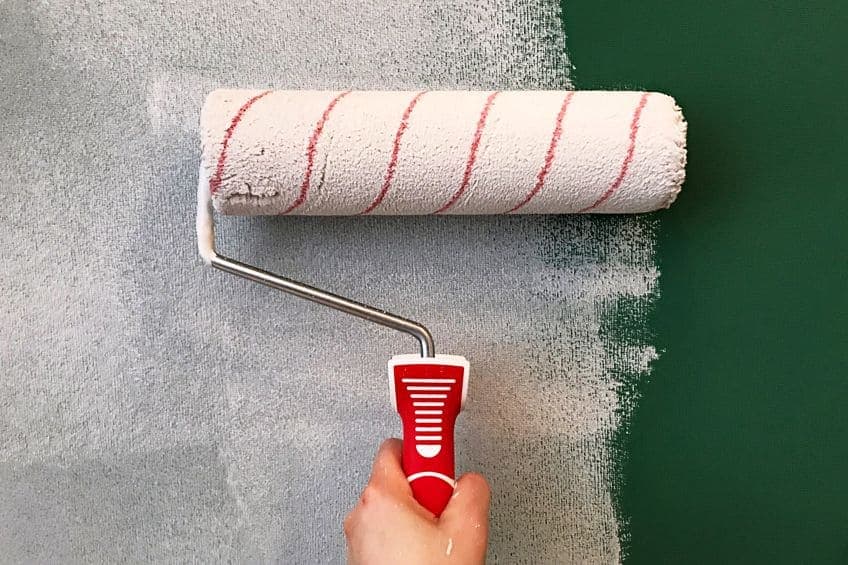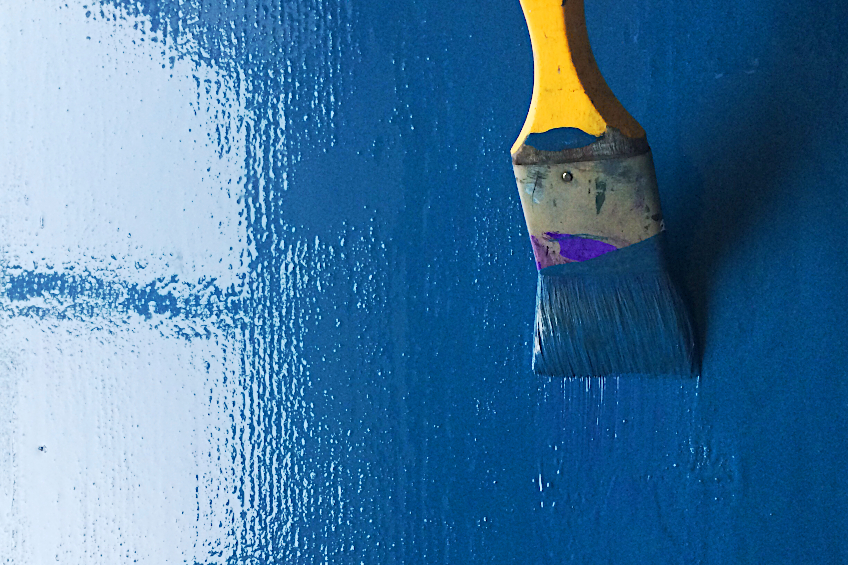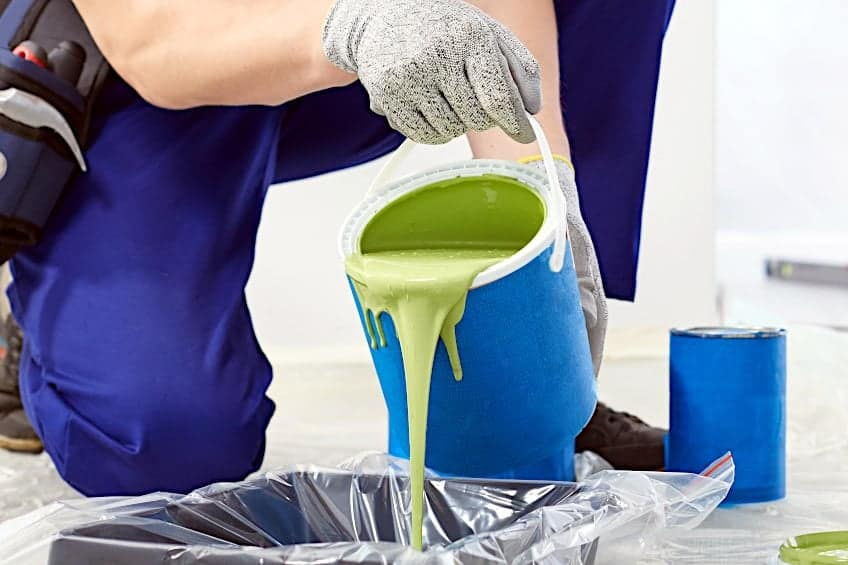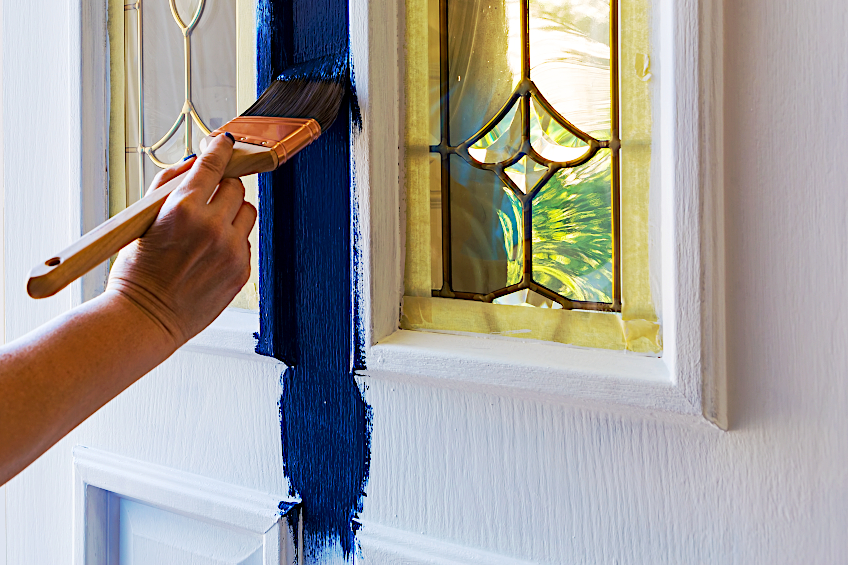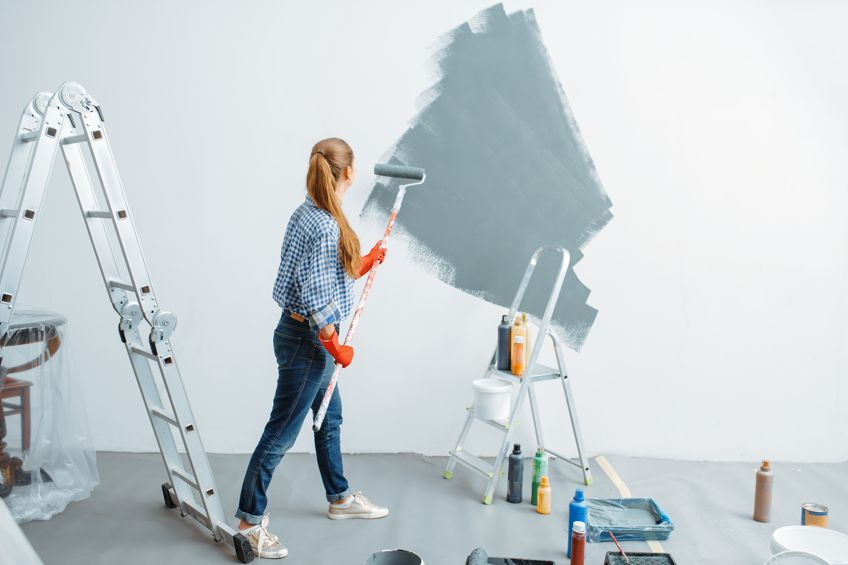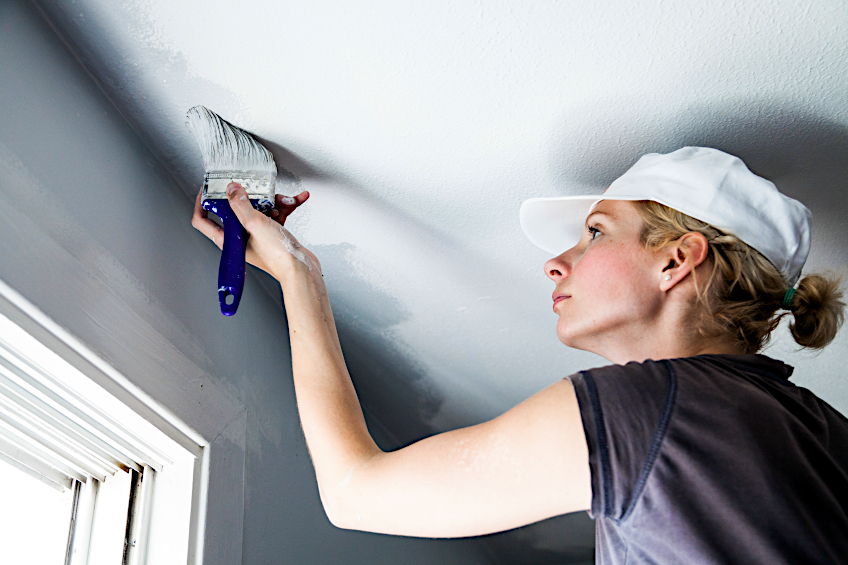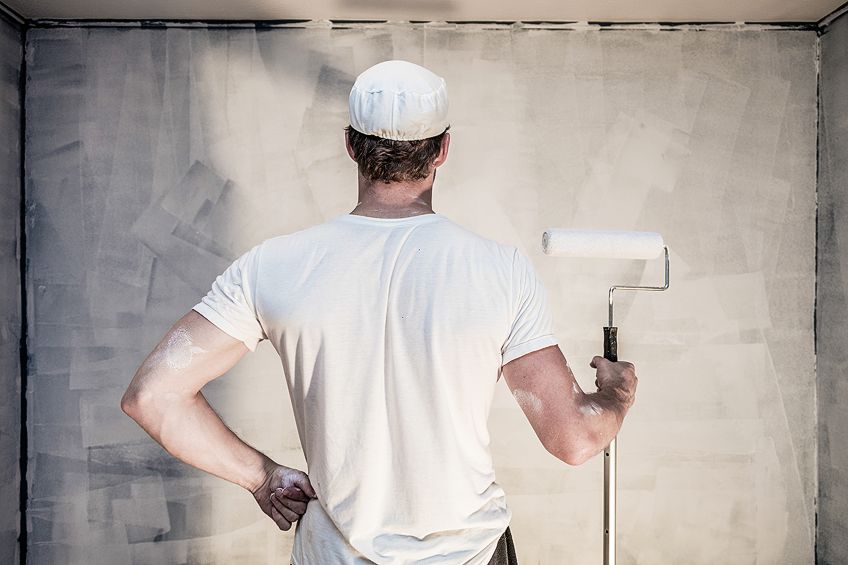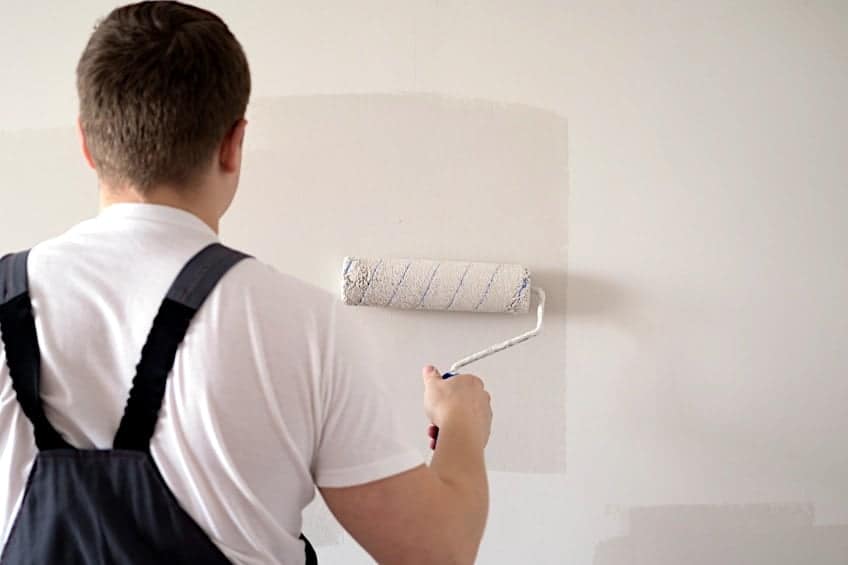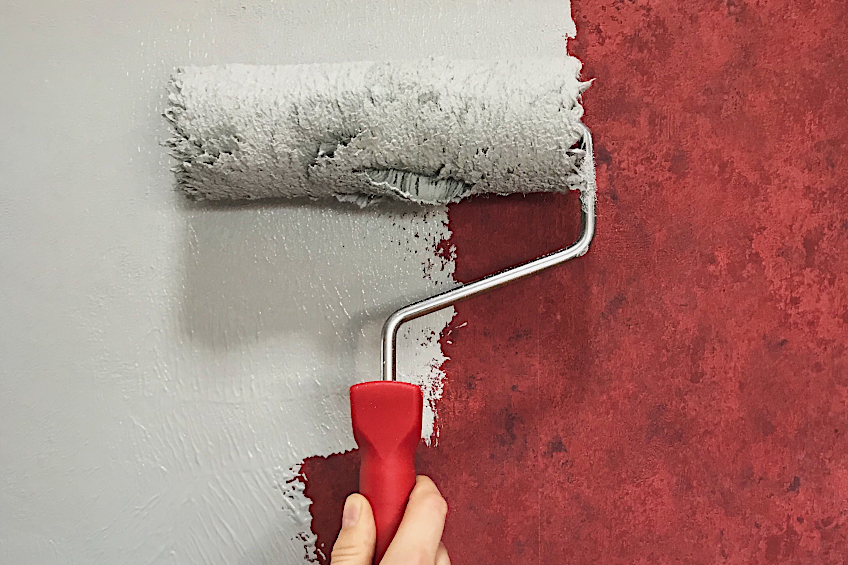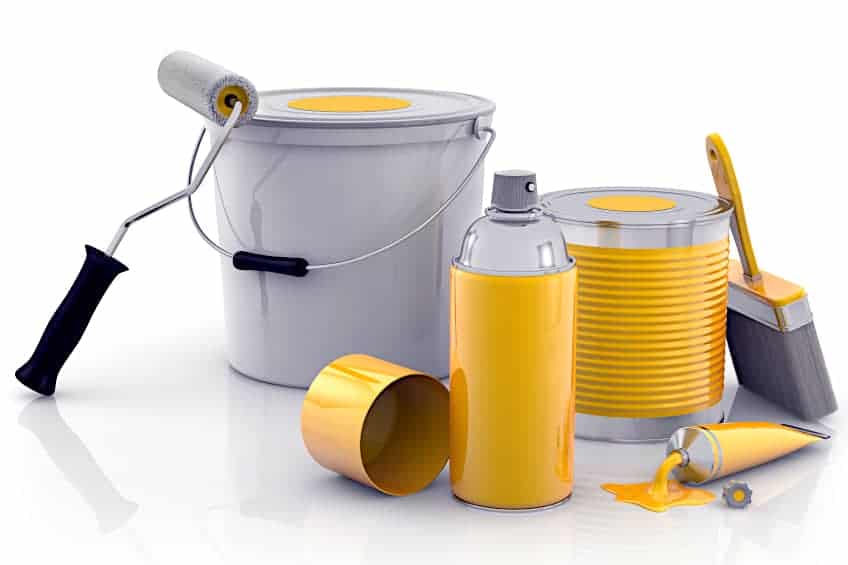How Many Coats of Paint on a Wall? – Perfect Paint Coverage Tips
This post may contain affiliate links. We may earn a small commission from purchases made through them, at no additional cost to you. You help to support resin-expert.com
It can be a relief to find the paint color you like, and even bigger relief to find that it looks just as you imagined it once it’s been applied to its intended surface. It can be extremely disappointing to find that the paint you have chosen doesn’t actually look the way you thought it would, and it might be tempting to apply a second or even third coat. How do you know that this is the right move though? Will the paint look different once it’s dried completely? How do you know how many coats of paint you need to use? How much paint should you use once primer has been applied? How many coats are too much? Let’s have a look at these and a few more questions regarding the number of coats you should use.
Table of Contents
How Many Coats of Paints Are Ideal?
Well, the chances are that everyone you ask will have a different answer for you, and with the internet, you’ll probably get loads of answers from painters from all walks of life. This being said, the general rule when it comes to painting interior walls is that you should apply two coats of paint to ensure that the color and consistency of the coating are good.
However, this isn’t always the case as there are different materials a wall can be made of. In fact, these days any number of surfaces can be made of wildly different materials, all of which need to be painted in a certain way, and with a specific type of paint in order to adhere and present well.
However, these aren’t the only variables you need to consider.
The type of paint, as well as the quality and quantity applied, can affect the number of coats needed for the paint to be effective both from an aesthetic and adhesive standpoint. There are more factors like the type and quantity of primer that was used on the surface, not to mention the type of material you’re coating.
Are More Coats of Paint Better?
Objectively speaking, more coats of paint are better than a single coat. Why? Well, paint has two primary purposes, one is to ensure that the surface of your workpiece is protected and the other is to ensure that it looks good (at least to you).
More coats of paint mean that the surface you’re coating is able to protect your workpiece, and it makes the color more pronounced.
However, this doesn’t mean that applying more coats is always the best option. There are instances where more paint might not fit the style or type of material you’re working with. Some paint types and finishes don’t really benefit from additional coats whether it be for aesthetic or practical reasons.
This is why it is important to understand when additional coats are required and when they aren’t.
Painting Different Surfaces
Whether you’re painting tile, drywall, ceilings, exterior surfaces, or brick, it can be challenging to determine just how many coats of paint you’ll need to get the most out of your color and texture. Below are a few short guides on just how many coats of paint a few of the most commonly painted surfaces require in order to achieve the best possible finish.
How Many Coats of Paint on a Wall?
How many coats of paint on a wall is enough? There are loads of paint guides detailing how many coats of paint you should use on a wall depending on the size, position, and whether it’s located indoors or outdoors. However, unless your wall is made of stone or other uncommon materials the rule of thumb is that your wall should have two coats of paint, especially if it’s located outdoors.
This is the best strategy especially if you’ve already applied a single coat of primer as it ensures that the first coat is reinforced. However, if your wall has already been painted and you’re repainting it, only one coat of paint is necessary. Why? Well, the wall has already been primed and painted, which means there is no risk of absorption or color dissipation.
How Many Coats of Paint on a Ceiling?
How many coats of paint on a ceiling? Painting a ceiling can be a frustrating exercise especially if you have an intricately shaped one, but the look and feel of your ceiling can have a huge impact on the aesthetic of the space. This being said, you should consider a paint that is both long-lasting and has a texture that complements your walls and other surfaces in the space.
Ceilings generally only need one coat of paint as they won’t be in contact with many things throughout their lifetime. This being said, the key to painting your ceiling well good preparation. Using one coat of paint means using a high-quality primer that not only ensures good paint adhesion but seals off the surface to the effects of moisture, dust, and other foreign particles.
How Many Coats of Paint on New Drywall?
How many coats of paint on new drywall? The installation and placement of drywall can be really labor-intensive. By the time it comes to painting you might lack the energy and/or motivation to consider how many coats of paint you need to make it look good. However, preparing and painting your drywall correctly will ensure that your drywall not only looks good but is insulated and protected from the effects of impact/abrasion.
Drywall is pretty brittle and is highly porous compared to conventional brick and mortar walls, which means that special care needs to be taken while it’s being painted. The rule of thumb when painting new drywall is to apply one coat of primer and two coats of paint.
Depending on the type and quality of paint being used. you might only need one coat, but two are recommended regardless.
How Many Coats of Paint When Covering the Same Color?
This is a good question considering that many of us find a color we love and simply want to restore a surface using the same color. If you find yourself in this scenario you should first ensure that you are using the exact same color that’s on your surface. Researching the color and using the same brand will eliminate any margin for error in this regard.
How many coats of paint should you use if you’re simply restoring a surface then? Well, since the existing coat has probably been on there for a while it means that the surface needs minimal preparation. This means that applying one coat after the surface has been prepared and sanded should work perfectly.
How Many Coats of Paint When Covering Dark Over Light and Vice Versa?
Have you ever found yourself in a situation where you’d like to change a surface to a darker or light color? If so, you might be wondering if you need one or two coats of paint to get the job done. The answer can vary depending on the type of paint you’re looking to paint over and the surface you’ll be painting on.
This being said, the rule of thumb when looking to go lighter or darker in tone is to apply two coats. Why? Well, the first coat should add a noticeable change in color to the surface of your workpiece while the second will prevent any bleed-through and/or inconsistencies in the tone of the paint.
If you’re going lighter, be sure that you’re using the correct paint types.
How Many Coats on Your Exterior Surfaces?
Think about it this way, if you’re applying two layers of paint to the interior walls of your home, how much paint will the exterior of your home need? Your exterior walls are exposed to rain, wild, sunlight, mold, insects, impact, and abrasion. In most instances, exterior walls can need two or more coats of paint to ensure they are well protected.
Why Do Certain Types of Paint Require More Coats Than Others?
How many layers of paint on wall surfaces is enough? Well, all paints are different and therefore need to be used differently to create an effective coating. Different brands of paint are sold at different prices and can vary in quality of color, and adhesive quality. This being said, you usually get what you pay for when it comes to paints.
Paints that cost a bit more tend to be of a higher quality. What is meant by a higher quality of paint? High-quality paints generally have more solvents and resins in their composition, which means they stick to surfaces effectively and the addition of premium pigments means tend better color quality and consistency. They usually take only two coats of paint to look as advertised, and some don’t even require primer.
Are There Benefits to Applying More Than One Coat of Paint?
Still on the fence about using more than one coat of paint? Well, in all fairness, it can take a lot of effort to apply one or two extra coats of paint to a workpiece, so reluctance is pretty common. However, there are benefits to applying more than one coat of paint, including enhanced color, longevity, durability, and a more pronounced texture.
Now that you know how many layers of paint on wall and ceiling surfaces is enough, how to use your paint effectively, how many coats of paint to use on drywall, how many coats of paint to use on an exterior wall, and how many coats of paint to use when transitioning from darker to lighter colors (and vice versa) its time for you to get out there and out your newfound knowledge to the test. Remember to always wear the appropriate personal proactive gear when working with any paint product.
Frequently Asked Questions
Are Three Coats of Paint Too Much?
Are three coats of paint too much? It could be in some instances, but it depends on the type of paint you’re using and the type of surface you’re painting. Painting a porous surface with particularly thin paint might require you to apply more than one coat.
How Many Coats of Paint After Primer?
How many coats of paint after primer, you ask? Well, this depends on the type of material you’re painting and the type of paint you’re using. Acrylic- and oil-based paints are thicker than latex-based paints, which means that you could find yourself needing to apply more than two coats when using the latter.
Are There Benefits to Using More Than One Coat of Paint?
Are there benefits to using more than one coat of paint? Yes! Adding an additional coat of paint doesn’t only do a better job of protecting your workpiece but also ensures that the color and tone of the paint you have selected are more pronounced.
How Many Coats of Paint on a Wall Is Enough?
How many coats of paint on a wall are enough? This is a good question, but it depends on a number of factors. The type of paint you’re using, the material you’ll be painting, the finish of the paint, as well as the overall viscosity of the paint can affect how much paint needs to be applied to a given surface.


